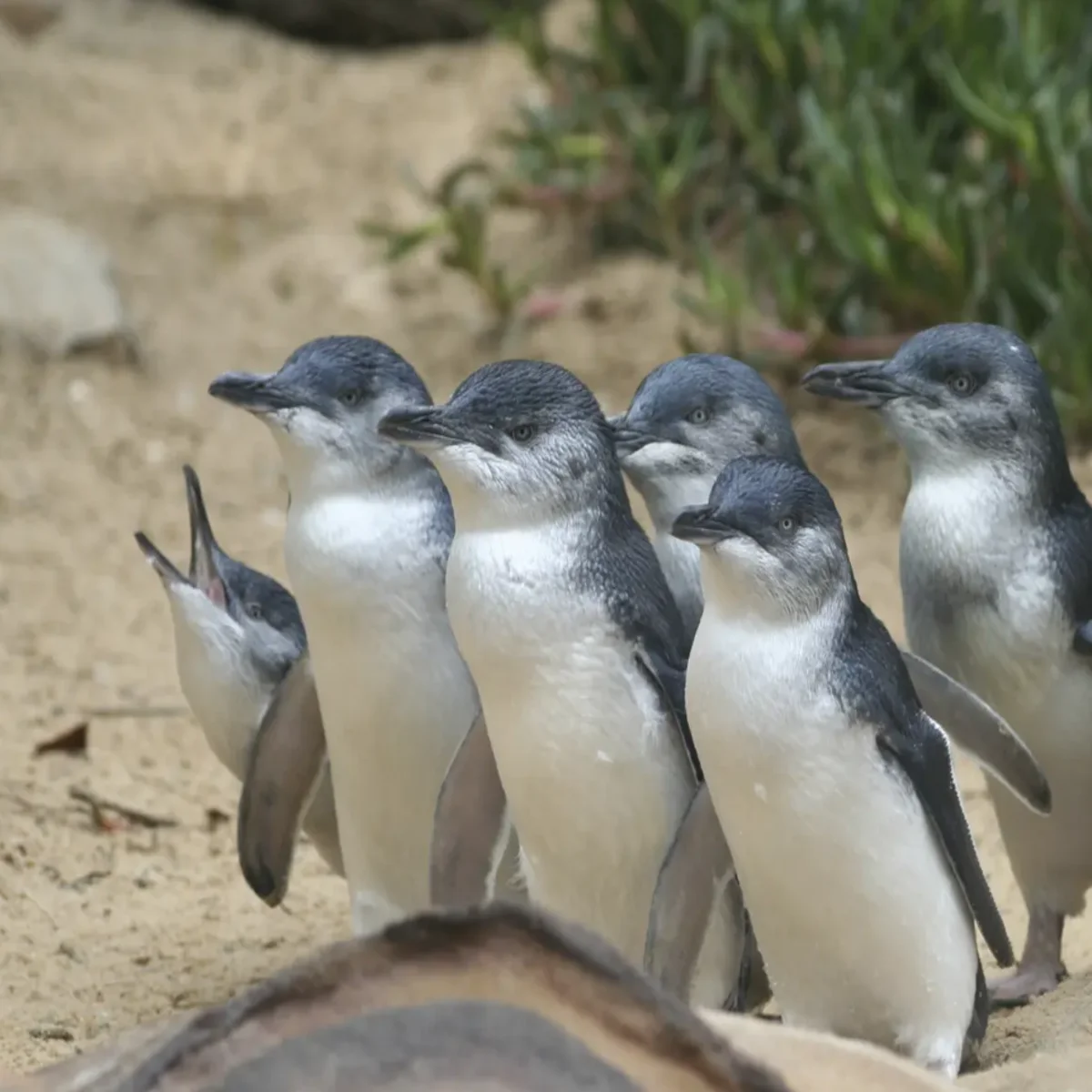One of the main attractions on Phillip Island near Melbourne is the nightly penguin parade at Summerland Beach, where tourists can observe the little penguins emerging from the ocean and waddling onto the sand.
The smallest penguins in the world are known for their hard-working nature, living both on land and in the sea.

Visiting Phillip Island
Today, Phillip Island showcases the abundant nature and wildlife historically inhabited by the Yalluk Bulluk clan. The Phillip Island Nature Parks organization manages over 1,805 hectares of beaches, bushland, and wetland reserves, prioritizing conservation and research efforts to safeguard the island's wildlife and natural resources.
During the summer, the island is a popular destination for tourists and locals to enjoy the beaches and seaside location. The nightly Penguin Parade, where Little Penguins return from fishing at sea to their burrows in the dunes, is a highly sought-after attraction that draws in thousands of visitors.
You can join us on Phillip island tours from Melbourne to visit this island.
Phillip Island has the Penguin Parade
Phillip Island, located just under a 2-hour drive from Melbourne, is renowned for its colony of Little Penguins. These penguins return to the island each night after feeding in the ocean, waddling across the beach to their burrows in the dunes. The Penguin Parade offers a unique opportunity to observe this natural phenomenon up close without causing any disturbance to the penguins or their habitat.
Interesting information about the Little Penguins
The Smallest Penguin
Little Penguins in Australia are approximately 40-45 cm tall and weigh up to 1.2 kg, while Emperor Penguins in Antarctica can grow to over 110 cm tall and weigh up to 30 kg.
Blue and white penguins have a unique colour combo
Little Penguins have blue or grey backs and flippers, with a white belly. Juveniles are typically brown. They have a black bill, pale pink webbed feet, and large toes. Their adult colouring helps them blend in at sea
Predators have a visual system that allows them to see white from below and blue from above.
Living in Australia
The Little Penguin is exclusive to Australia and New Zealand, nesting along the southern coast of Australia's mainland and Tasmania, with most colonies located on islands like Kangaroo Island and Phillip Island.
Penguins are waterproof
Little Penguins maintain their body temperature at sea by secreting an oily liquid from their tails, which they spread over their feathers to stay waterproofed.
Life at Sea
The Little Penguin spends a lot of time hunting for food at sea. They can sleep on the water surface while at sea. In their first year, they can travel over 1000 km alone. They use their wings as flippers to swim up to 6 km per hour. They can dive up to 60 meters deep to catch fish.
Sea feeding
The Little Penguin eats its body weight in food each day. While at sea, it feeds on small fish like anchovies, pilchards, garfish, and krill. The penguins hunt for small fish in shallow waters and dive to the sea floor for squid and krill. They swallow their catch whole and bring food back to the nest for their young.
Birds nest in the dunes
Little Penguins primarily spend the day feeding at sea but come to shore to rest mate, and moult. They create burrows in dunes and can also be found in rocks and caves.
Annual shedding
Every year, penguins must return to their burrows to moult. Moulting involves shedding old feathers and growing new ones, lasting up to 2 weeks. During this time, penguins cannot return to the sea to feed because their new feathers are not waterproof. To prepare for the moulting period, penguins must fatten up by feeding more.

Male or Female?
Male and female little penguins look similar, but males are more prominent with deeper bills and more giant heads. Males make a lot of noise when trying to court the female, and they try to impress her with their burrow. During courtship, both birds exhibit specific behaviours such as standing upright with flippers spread, head bowed, and walking in tight circles around the nesting site.
Eggs with toast
The female lays 1 to 2 white eggs in the burrow. Both males and females take turns incubating the eggs for 1-2 days at a time. While one parent stays with the eggs, the other goes to sea to find food. The eggs typically hatch after 33-37 days.
Feeding chicks
After hatching, it takes about a week for the chicks' eyes to open. Both parents take turns hunting for food for the first five weeks and staying at the nest. The chicks are left alone at five weeks old as both parents go to sea to fish. Around eight weeks old, the baby penguins will go on their first trip out to sea.